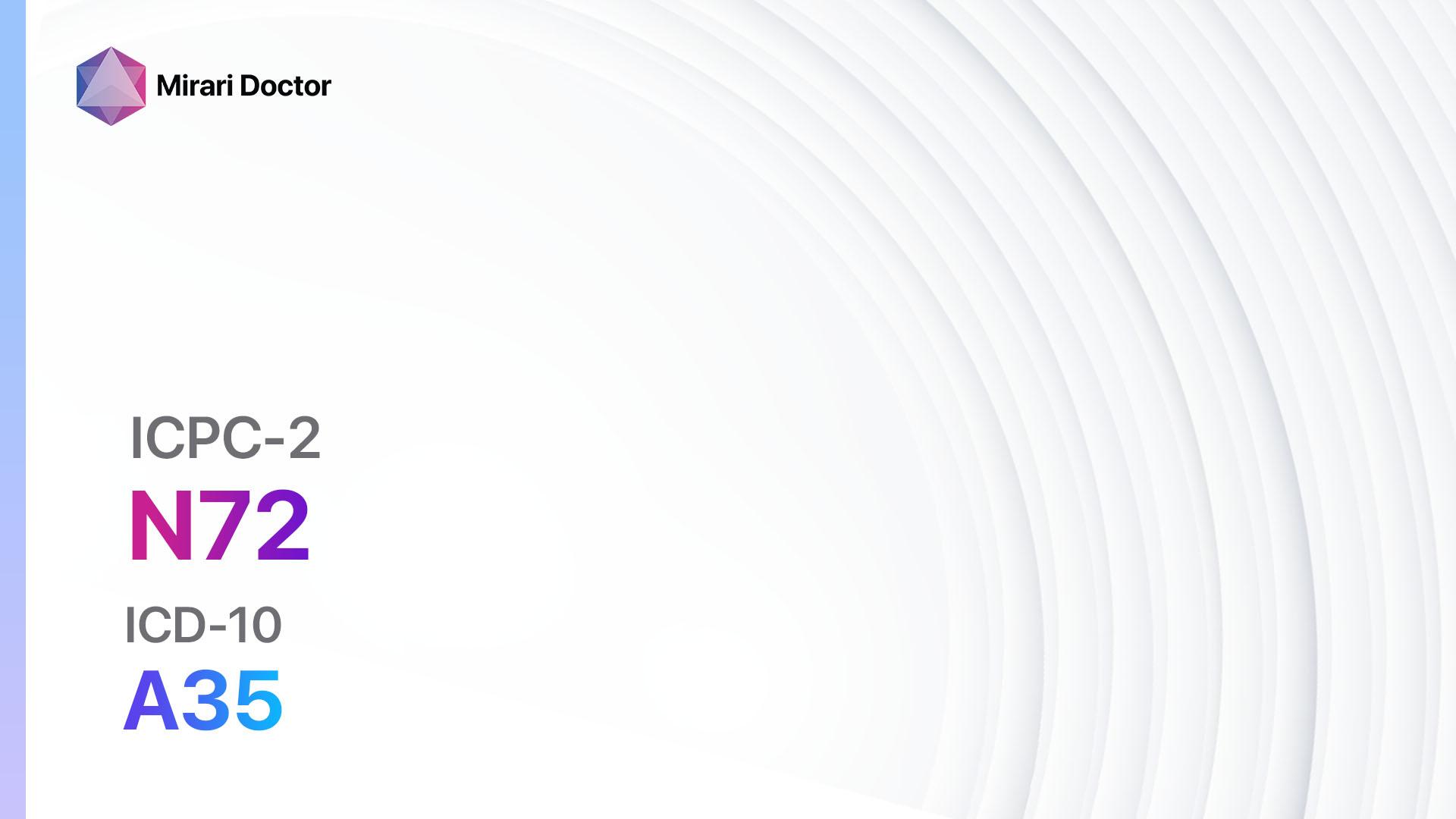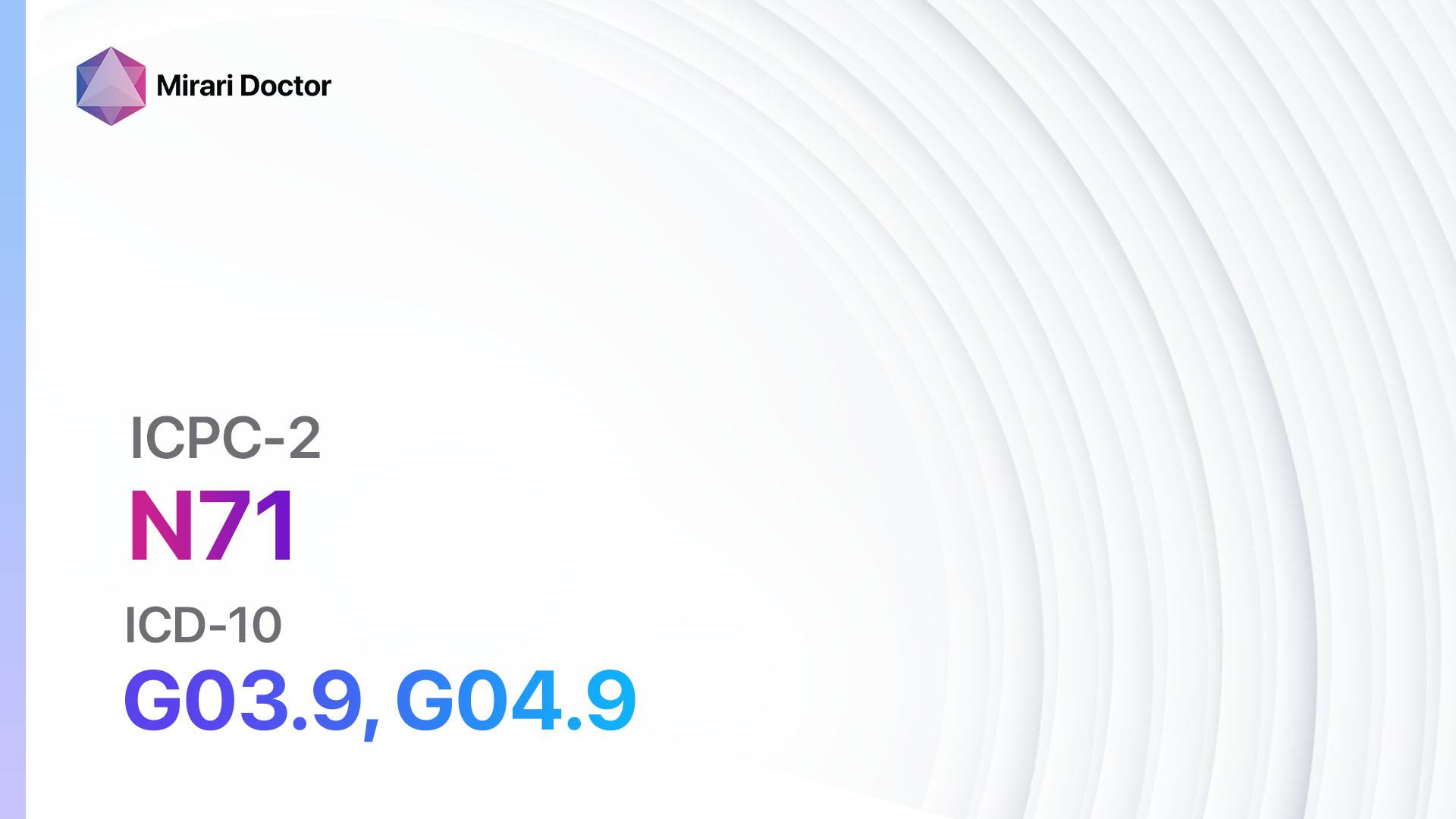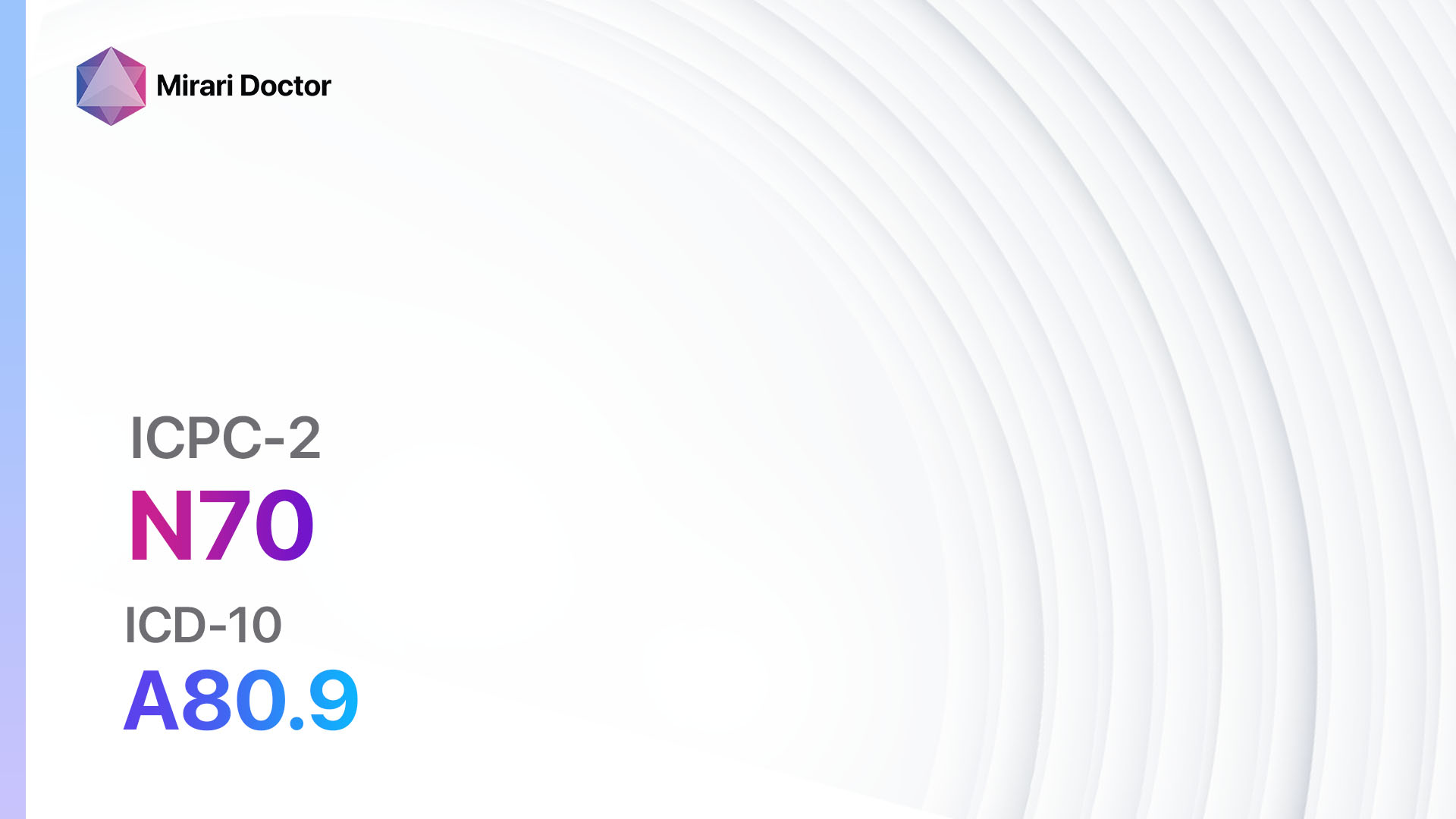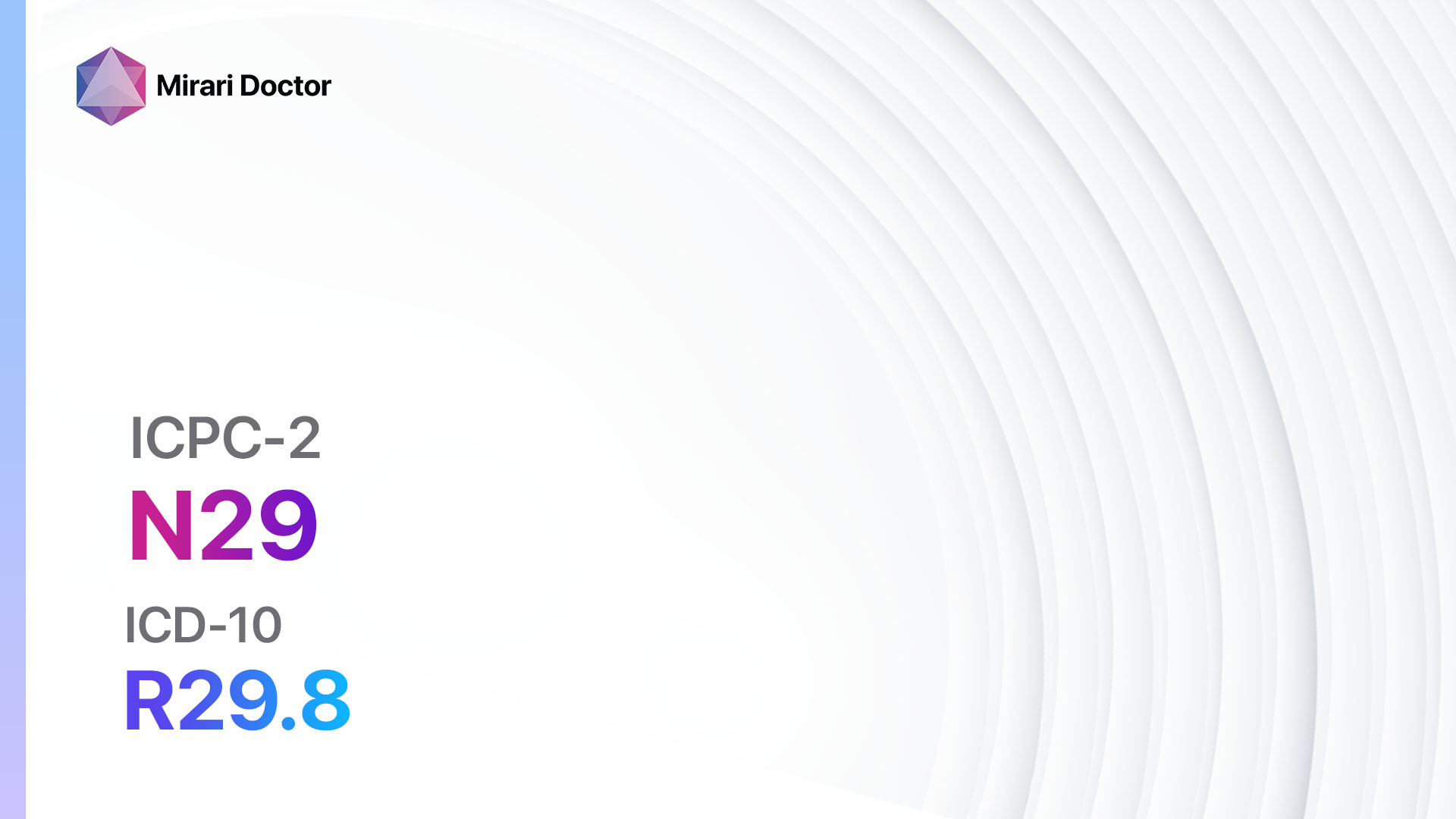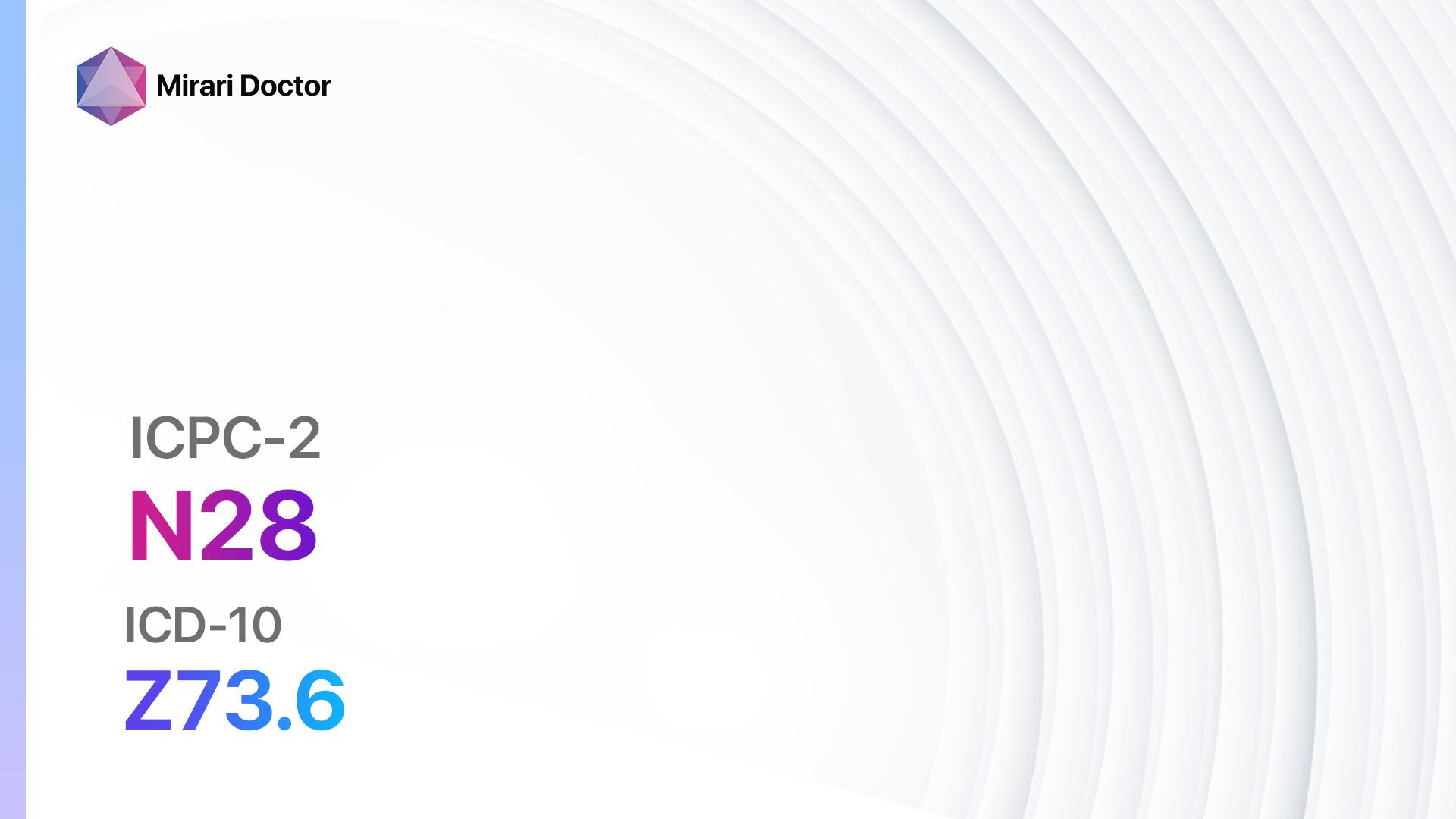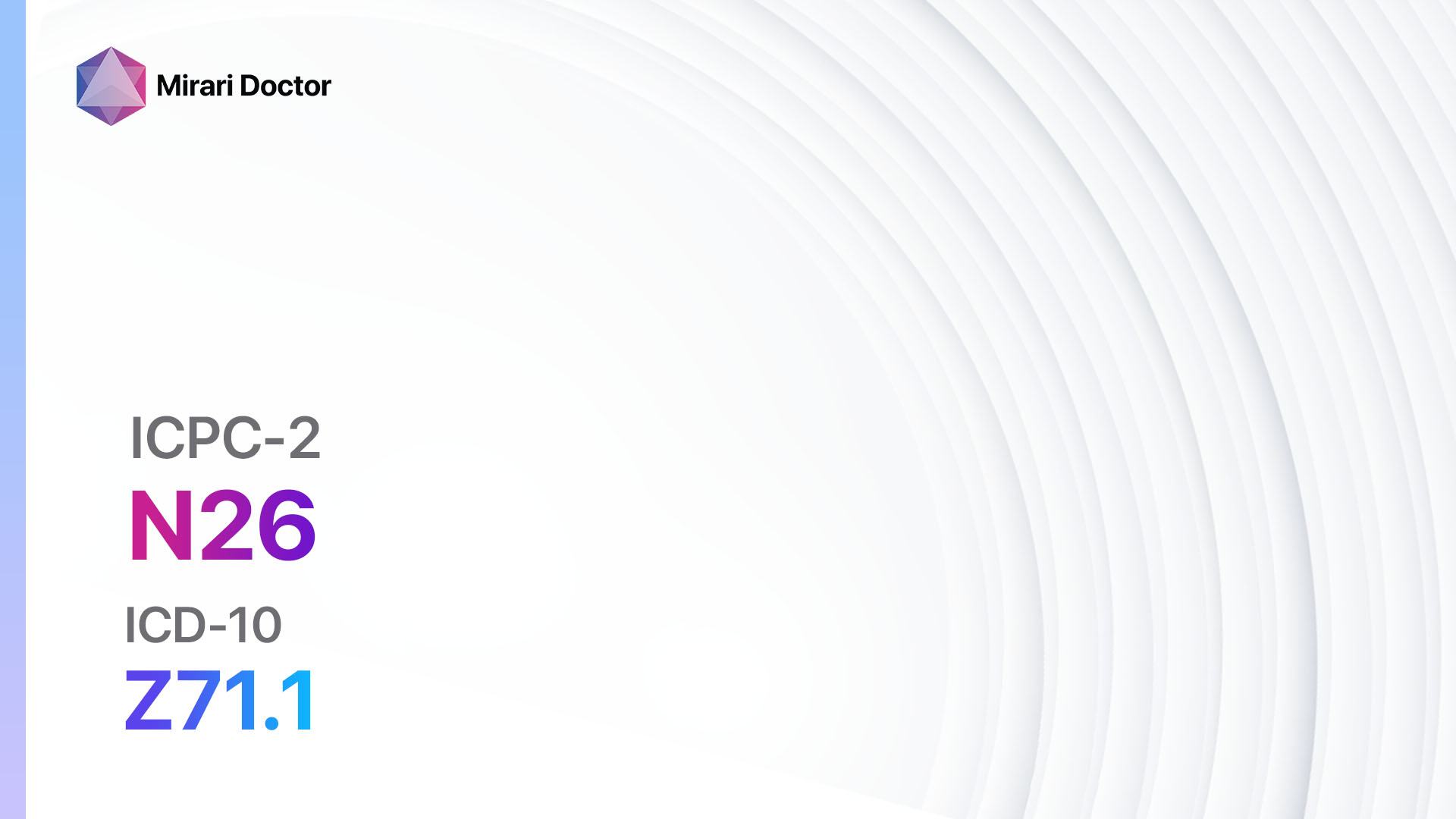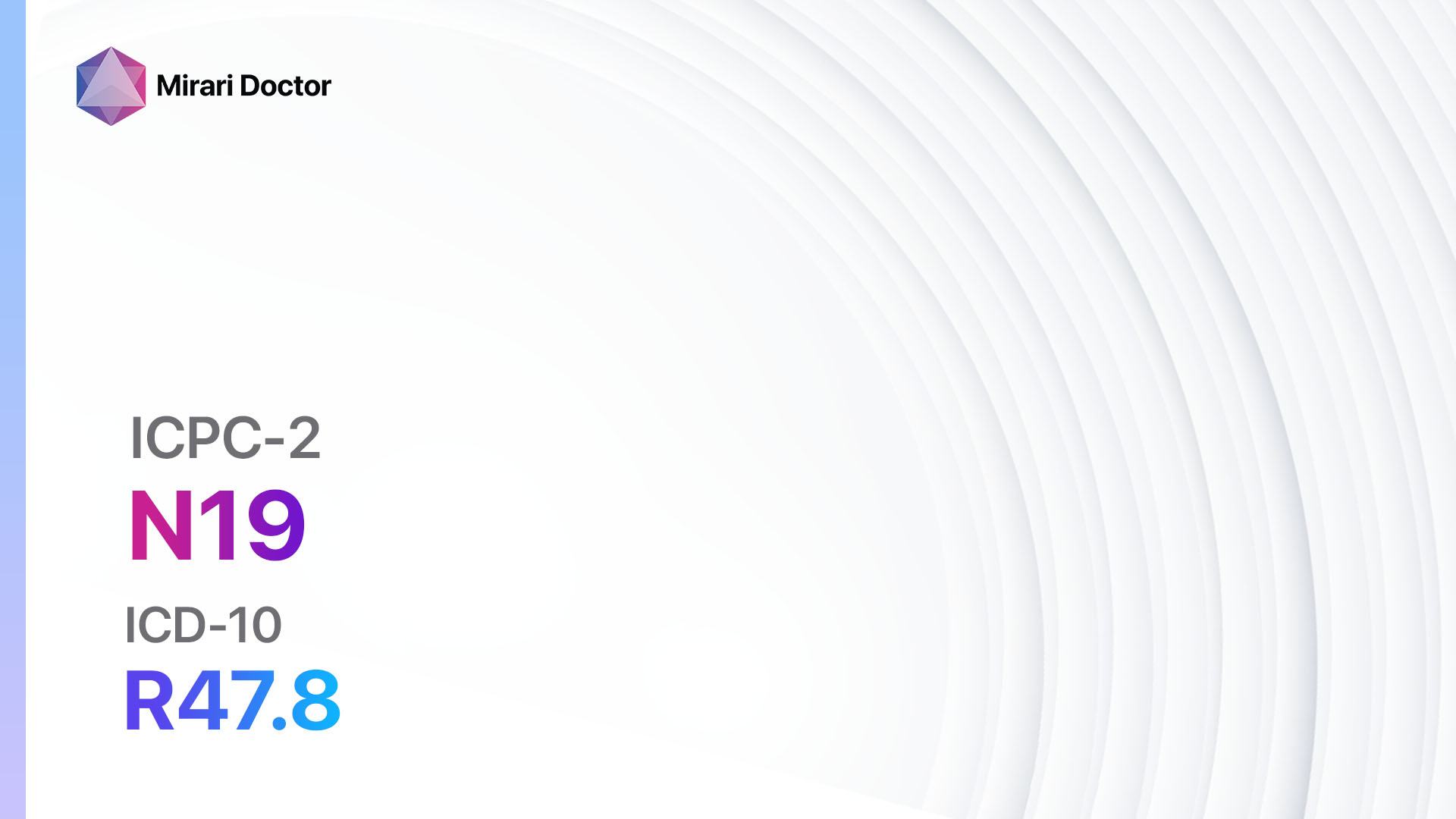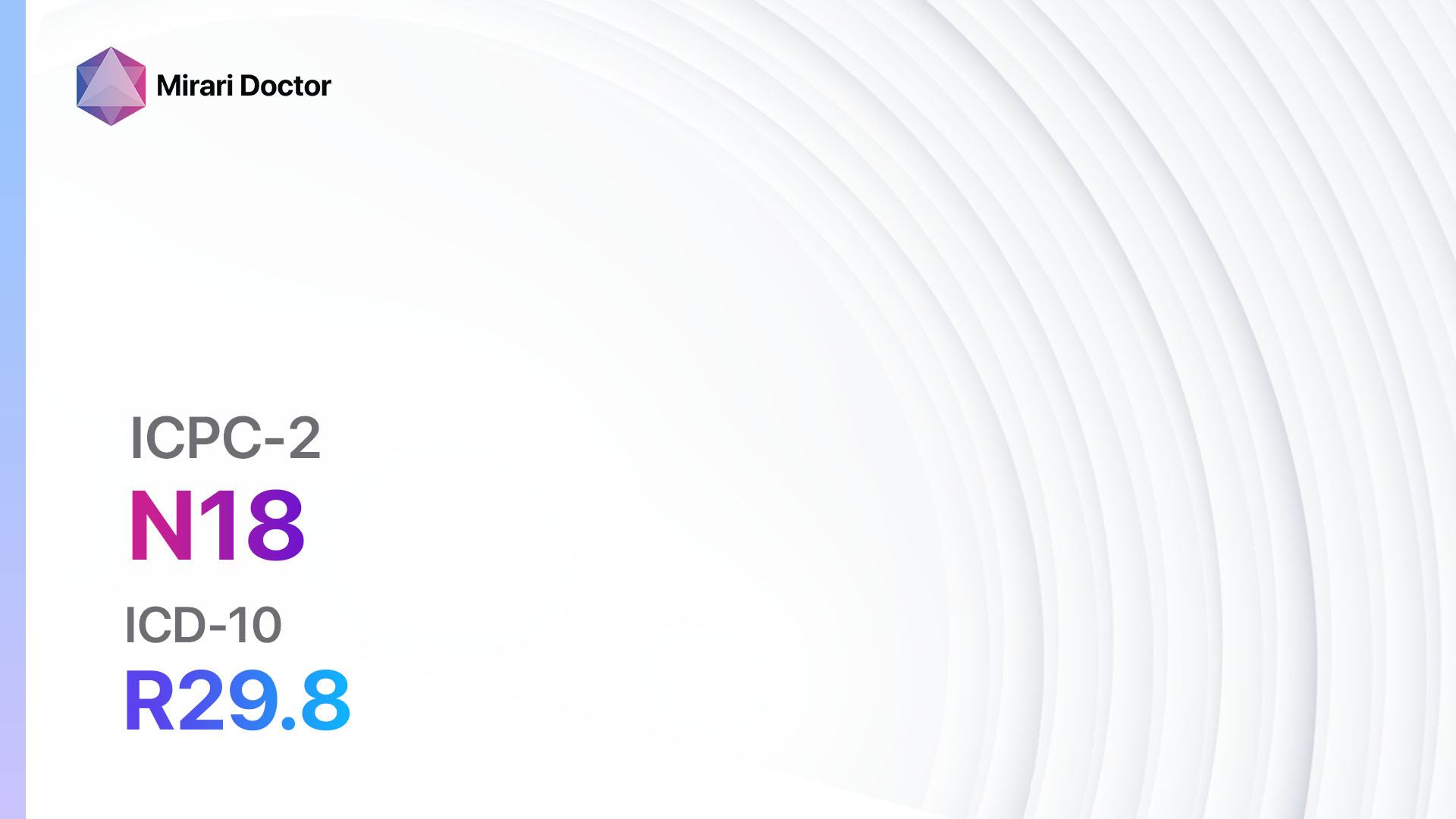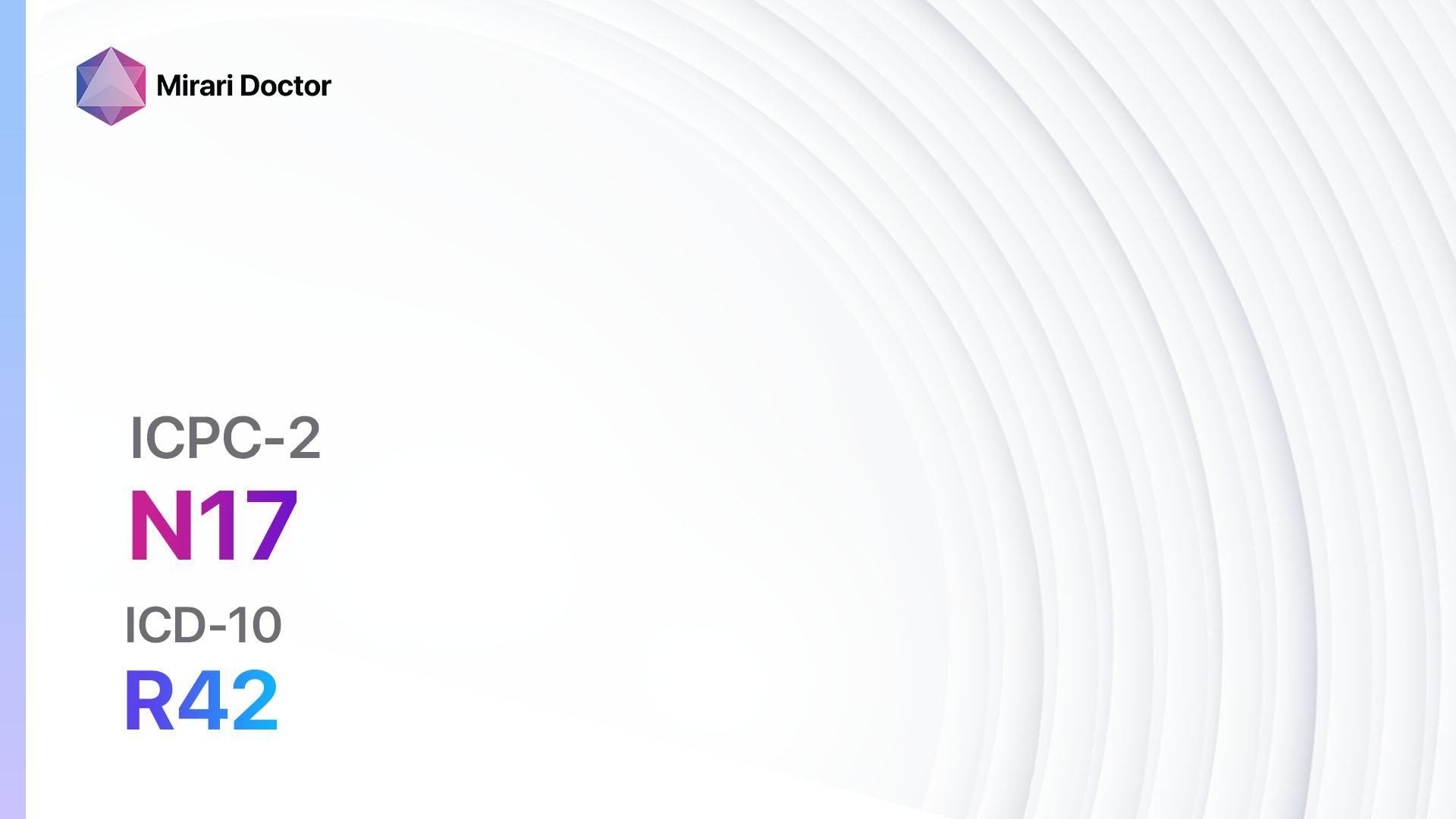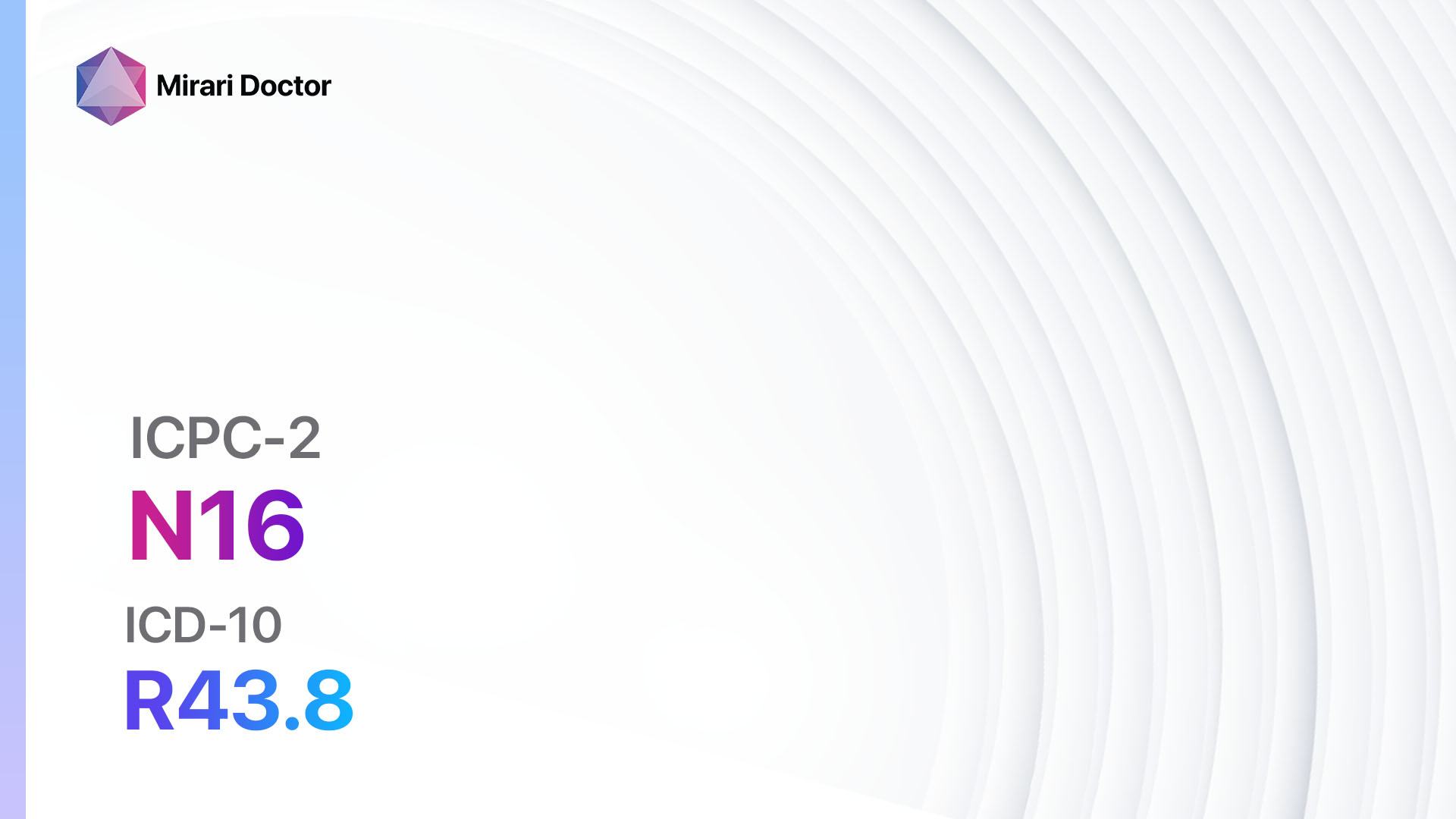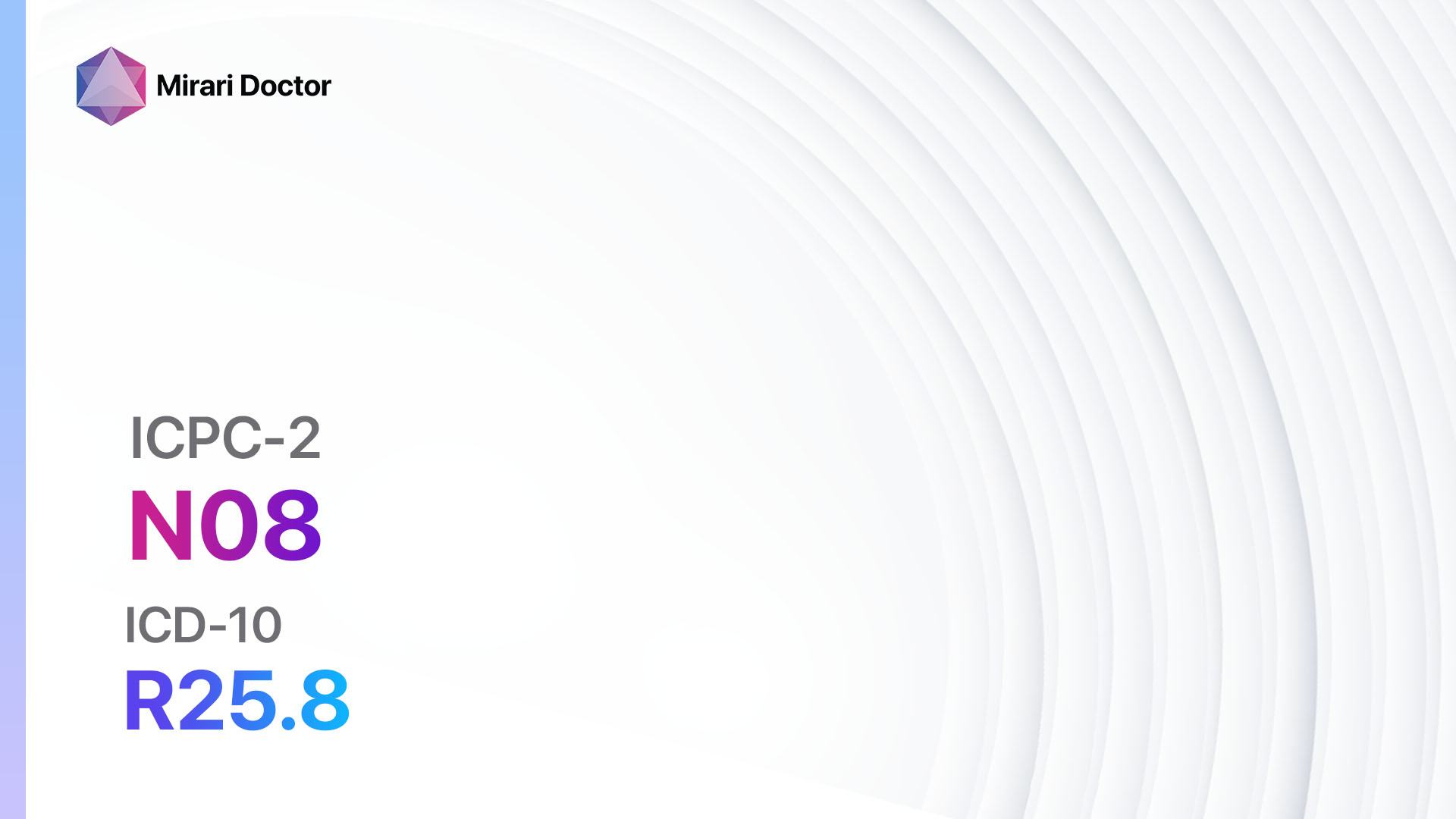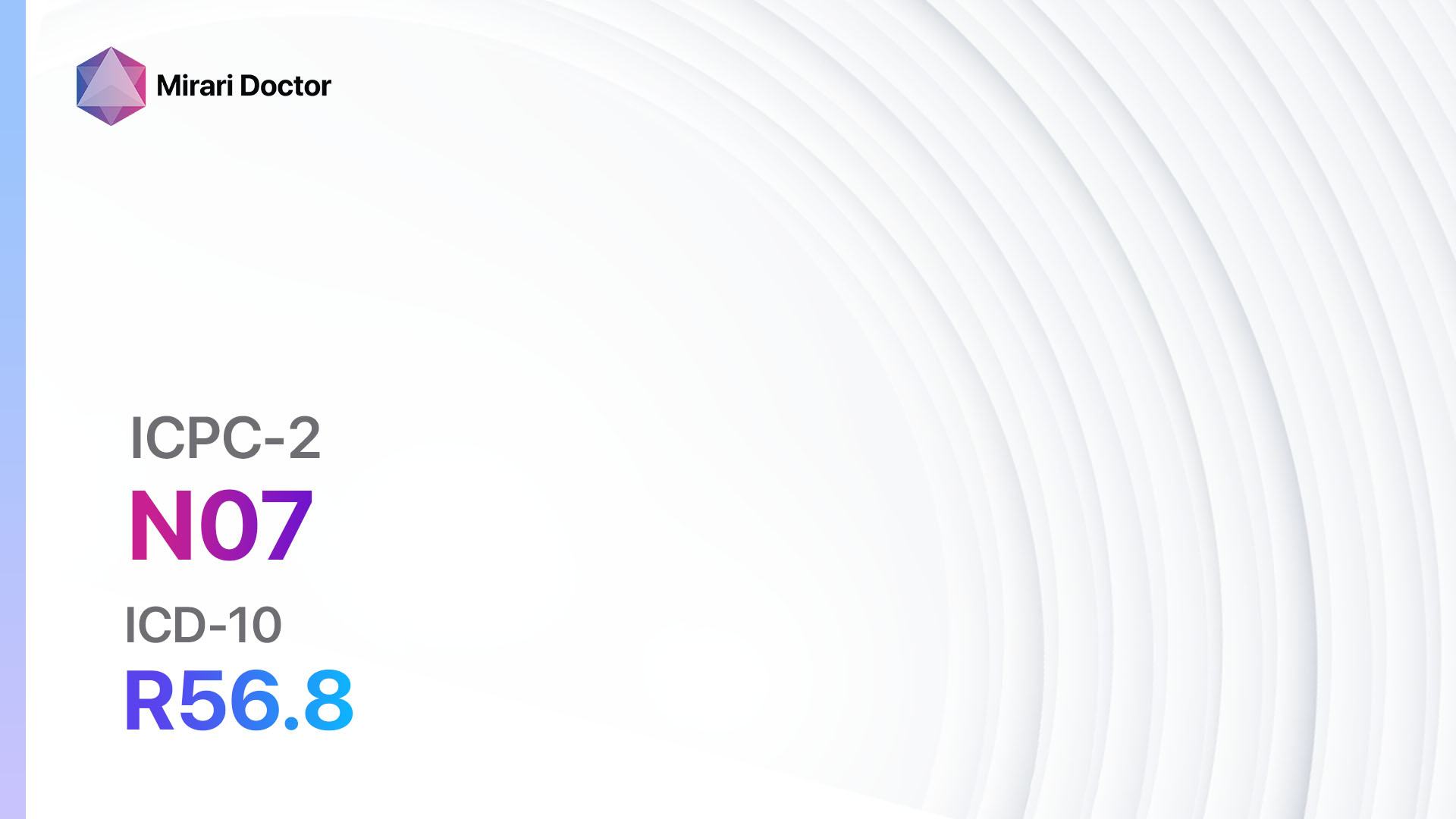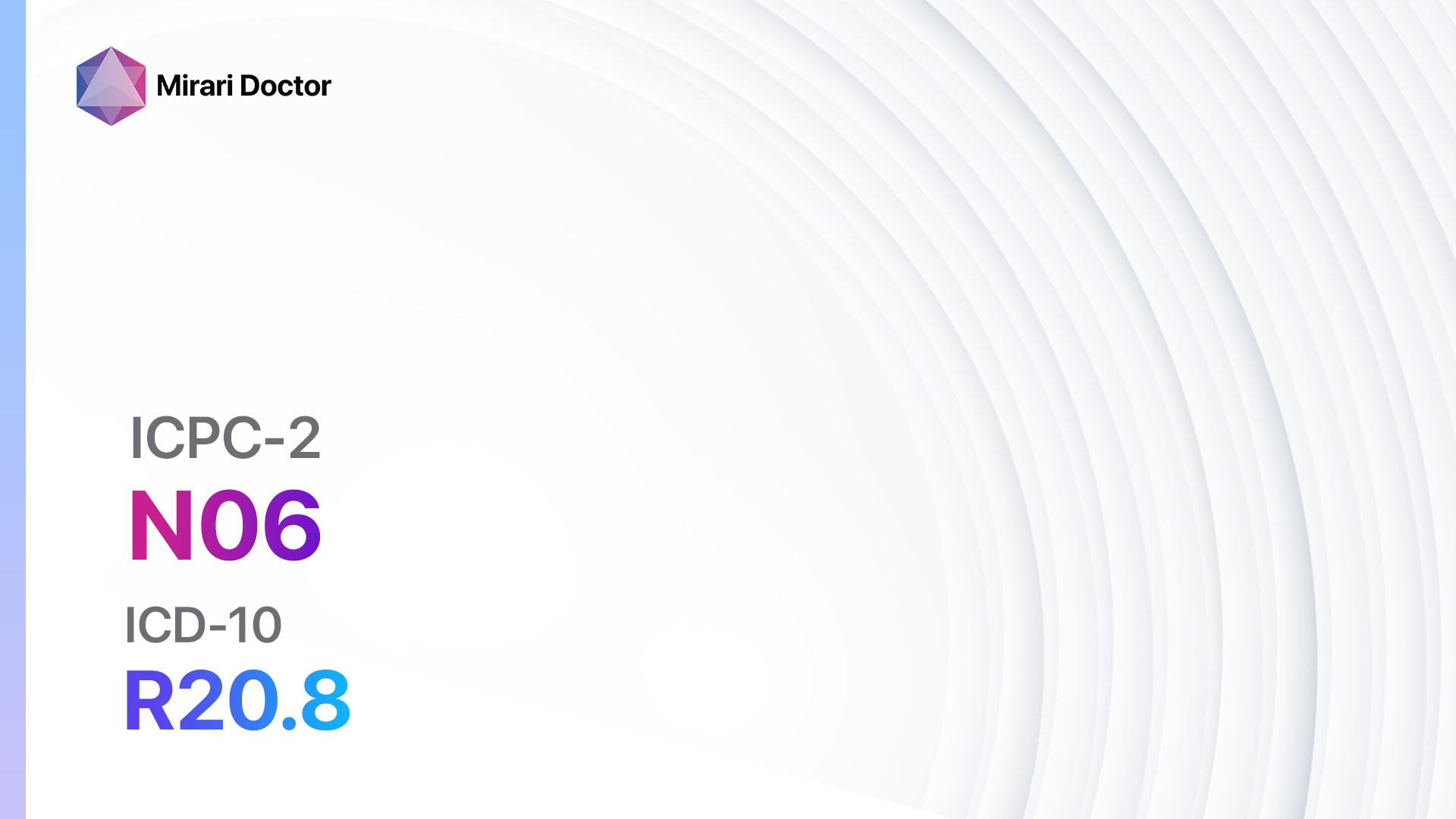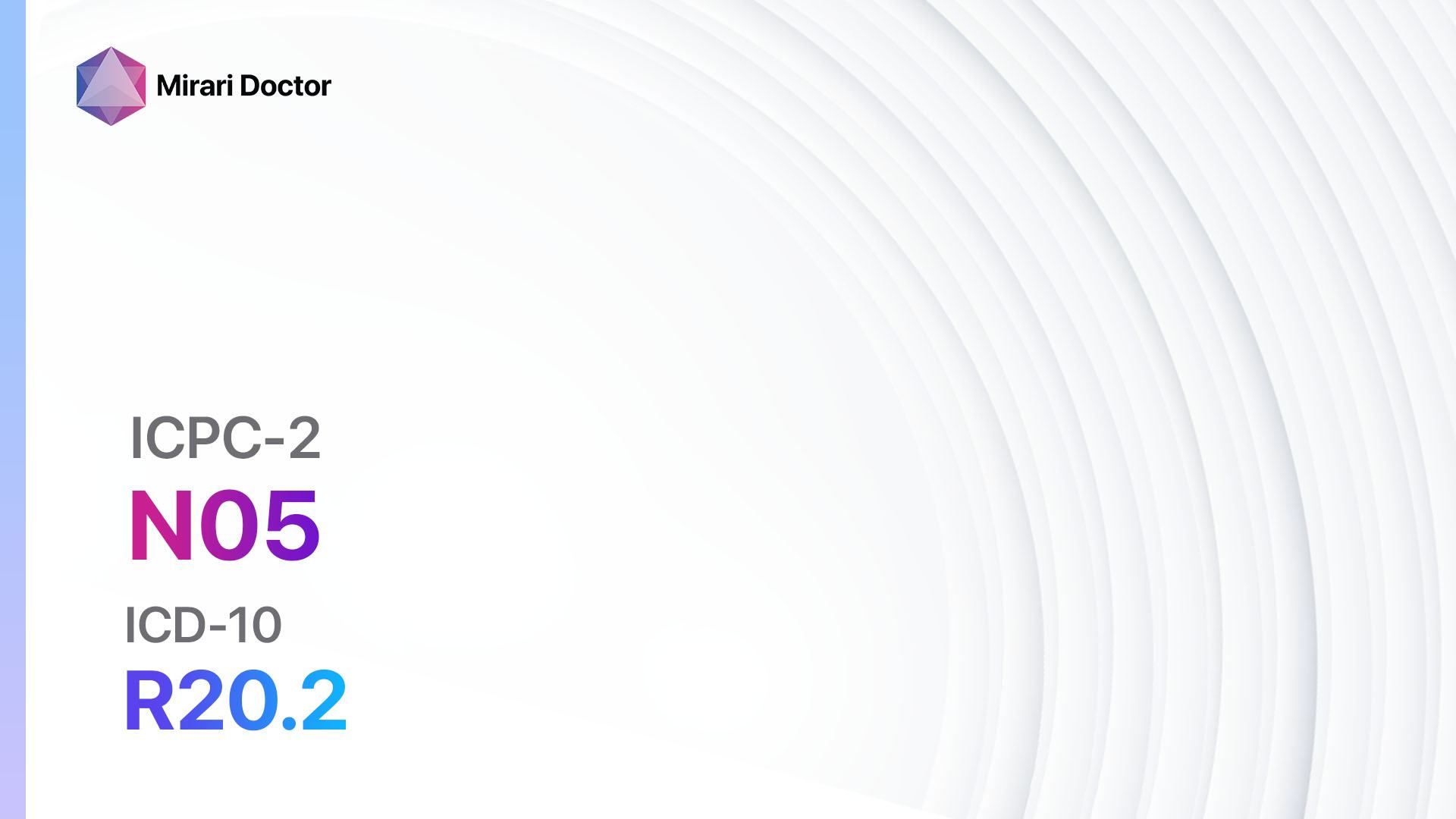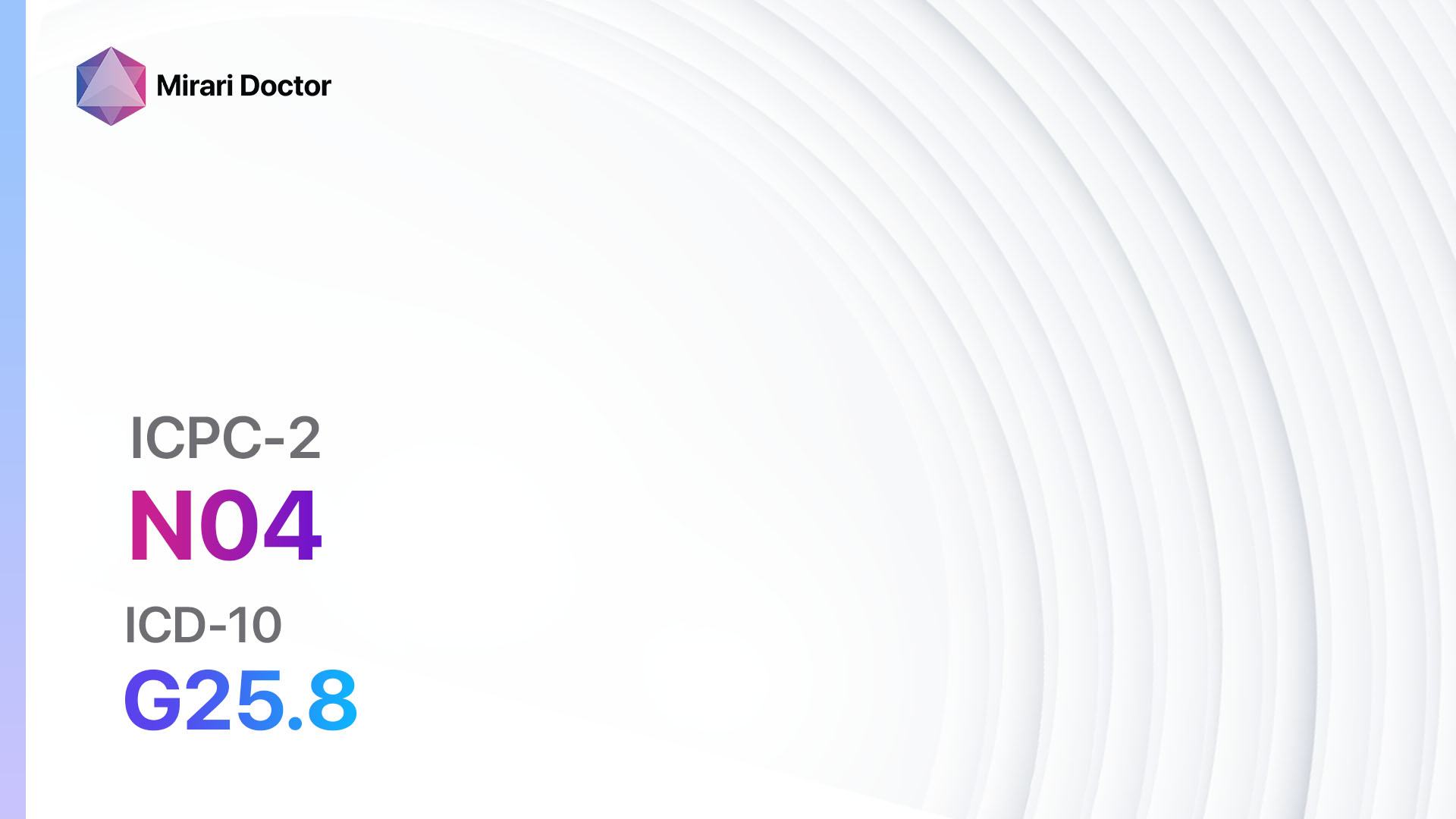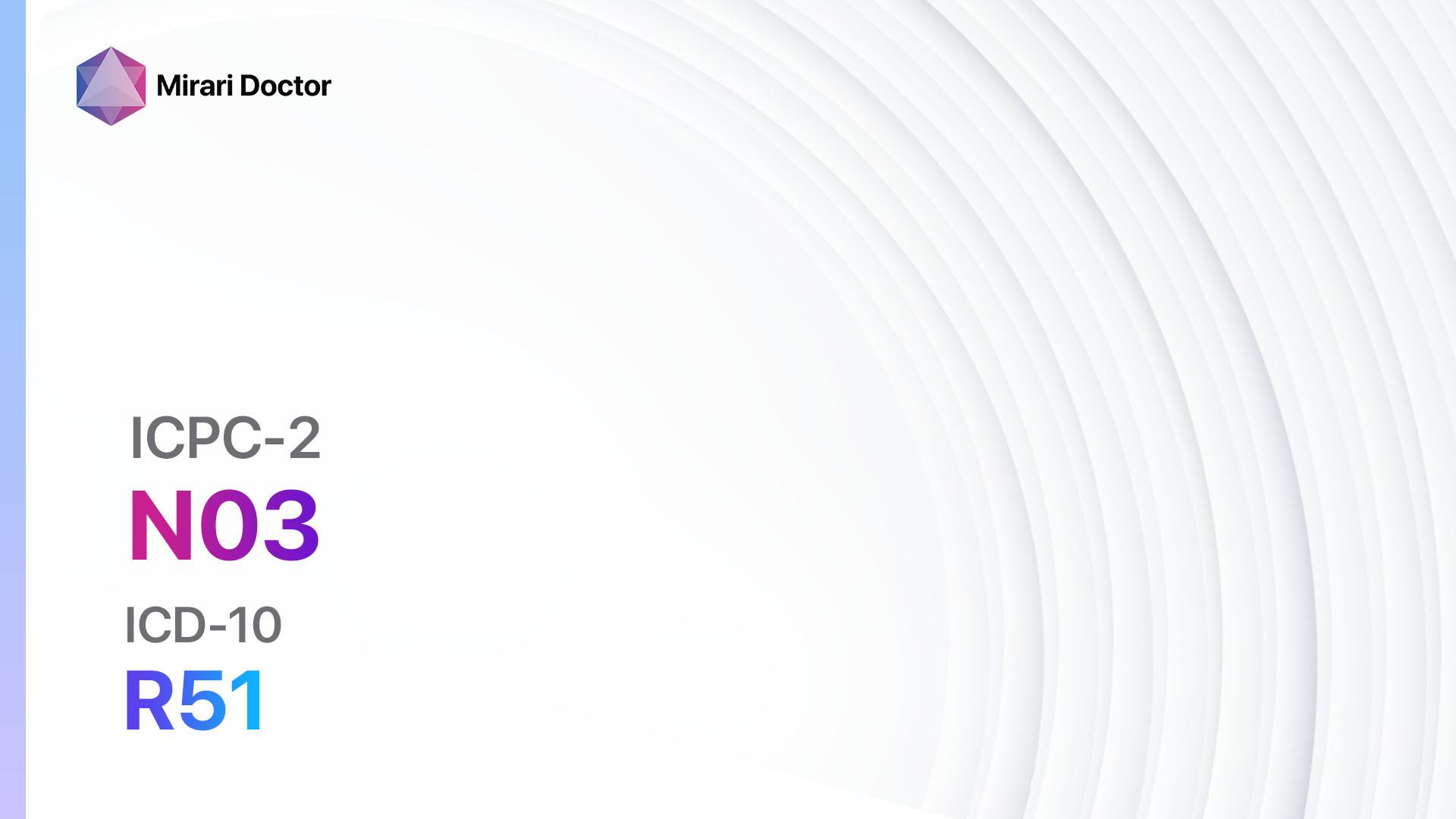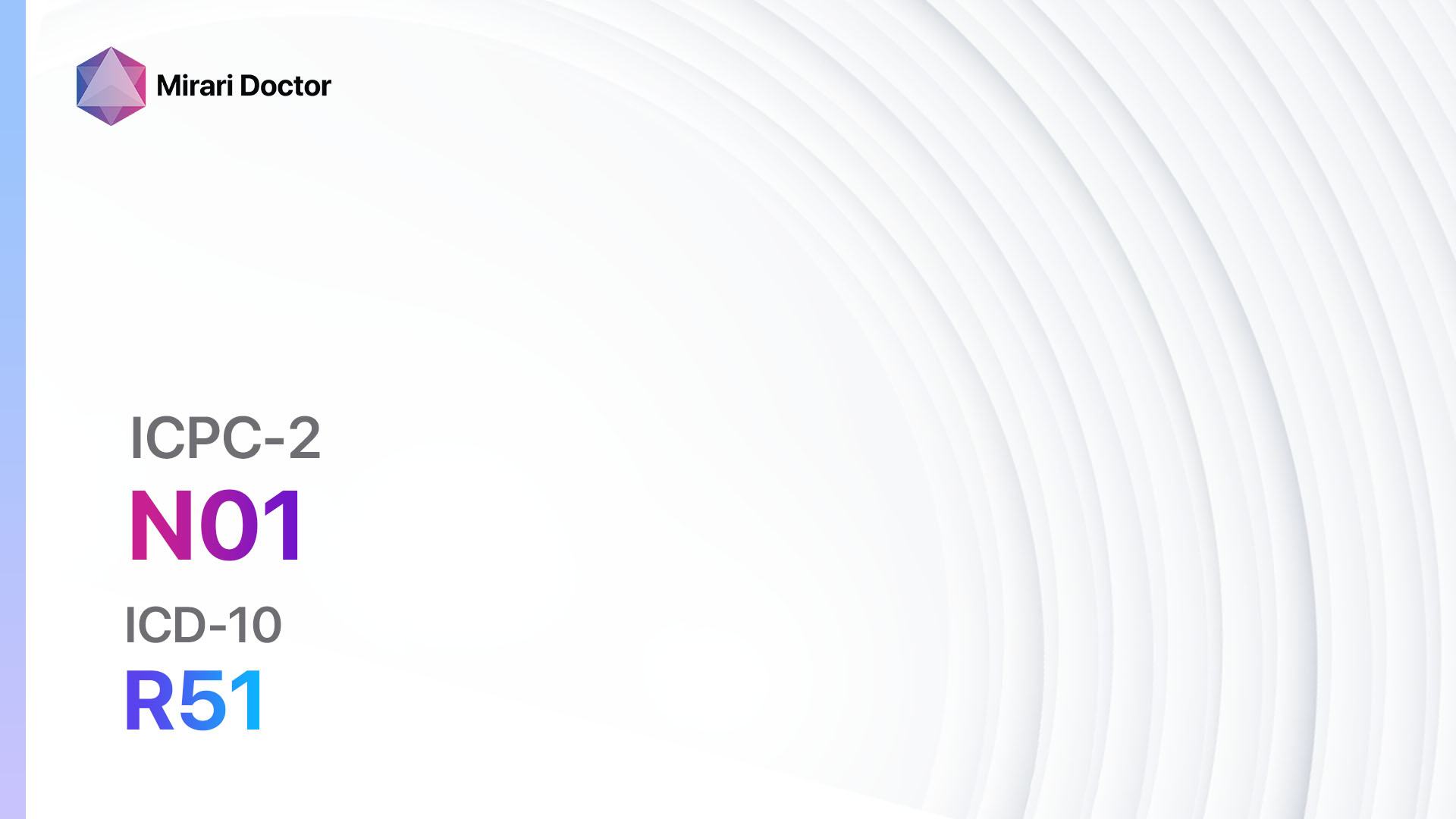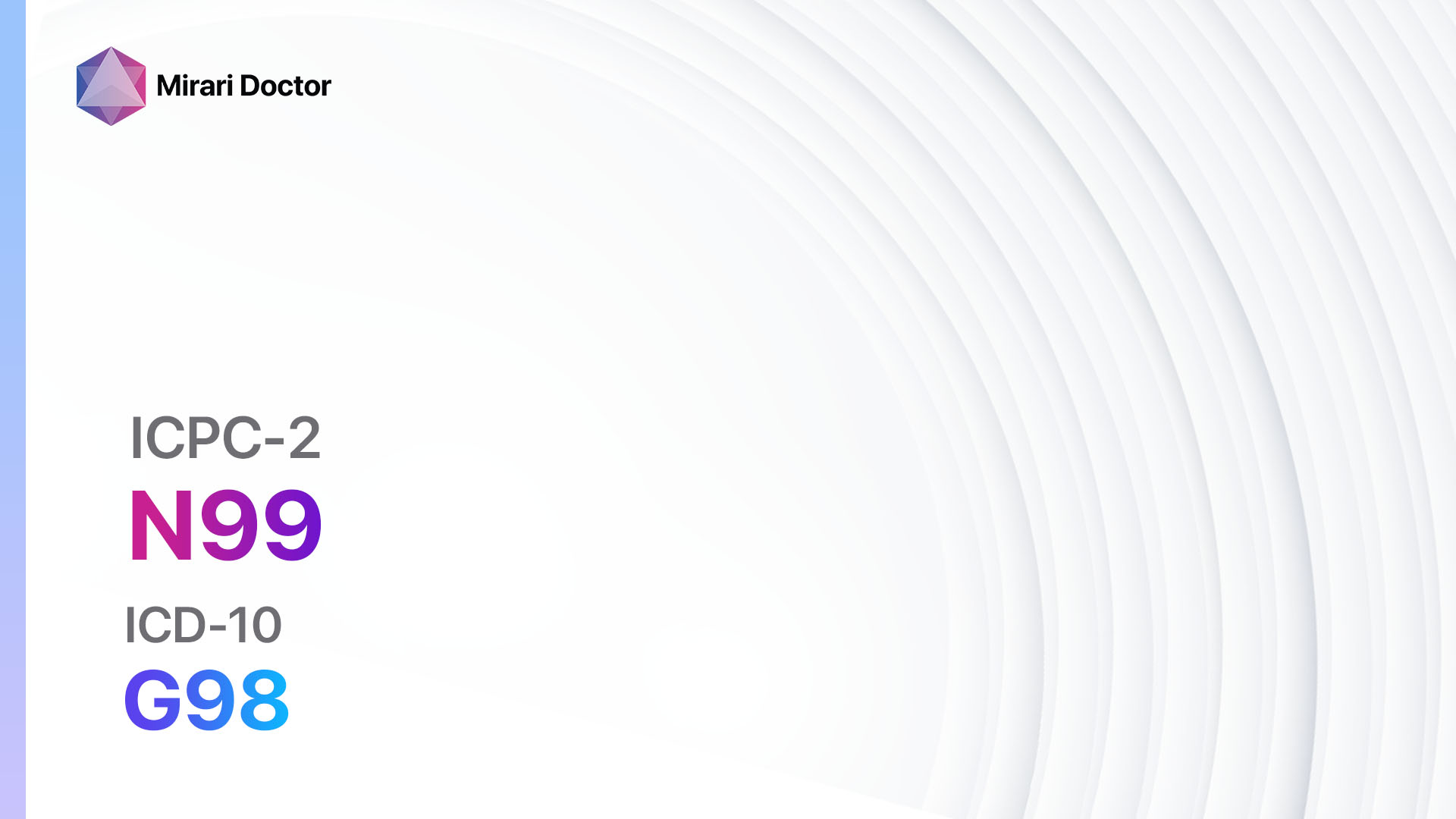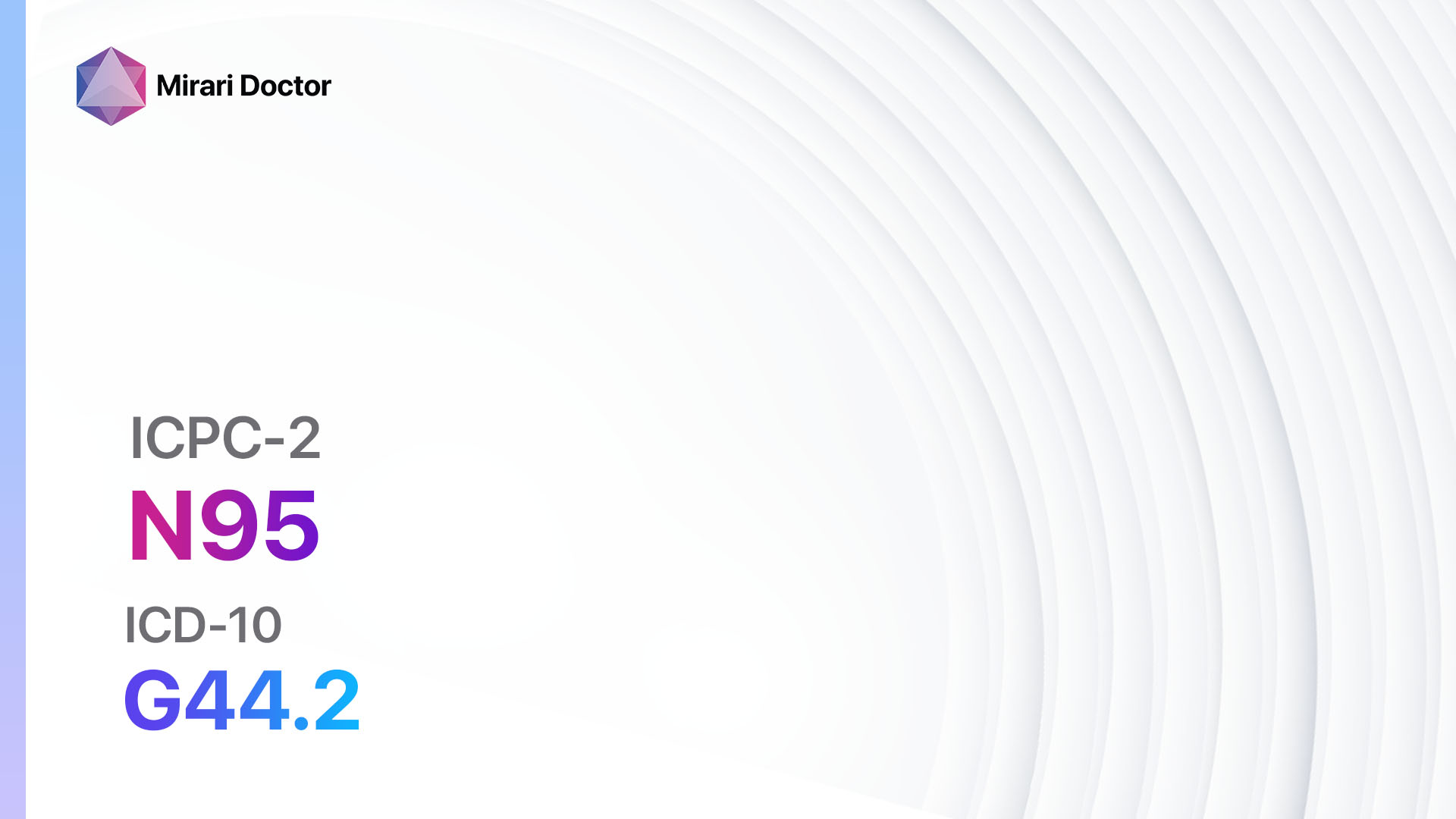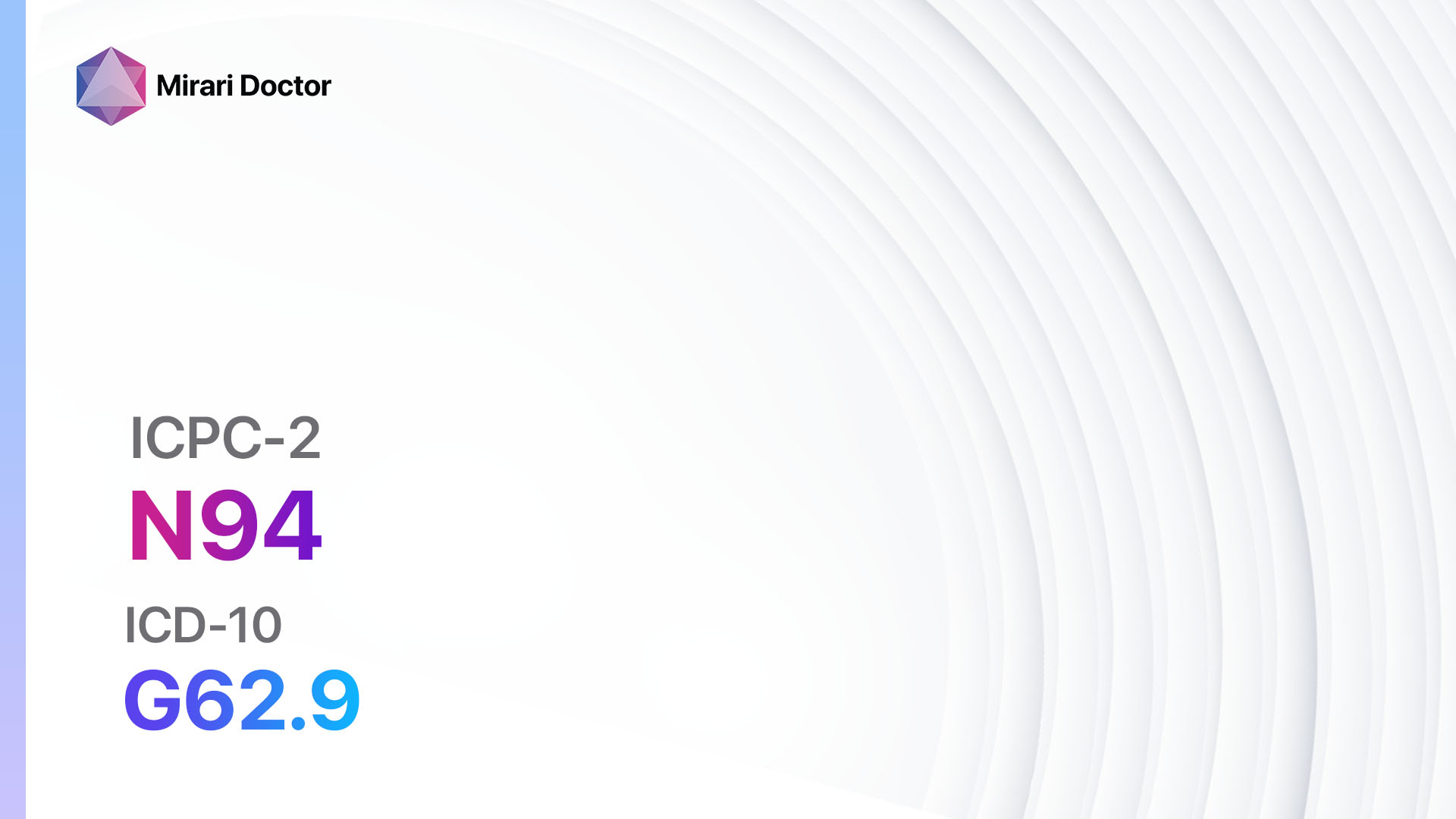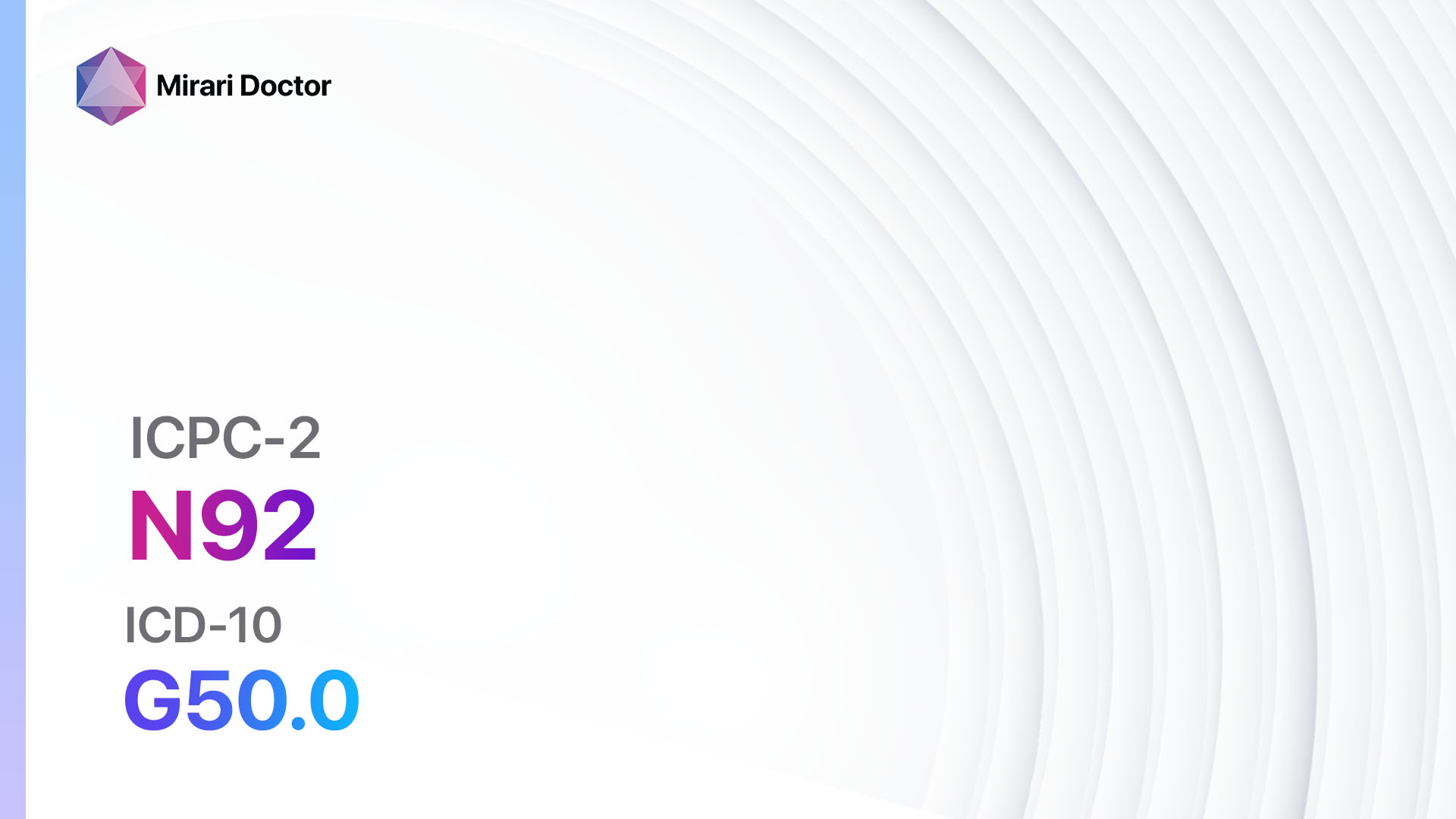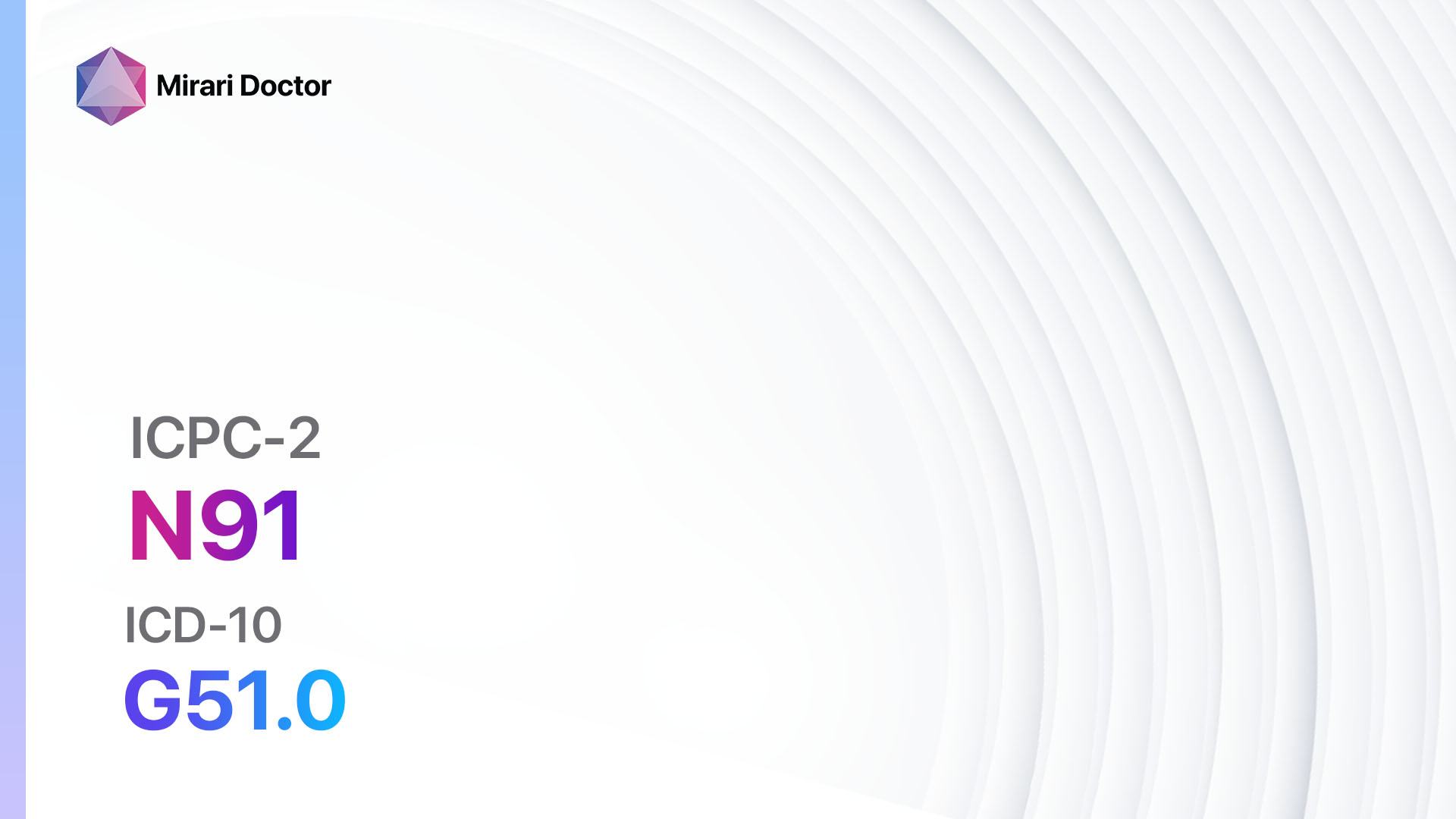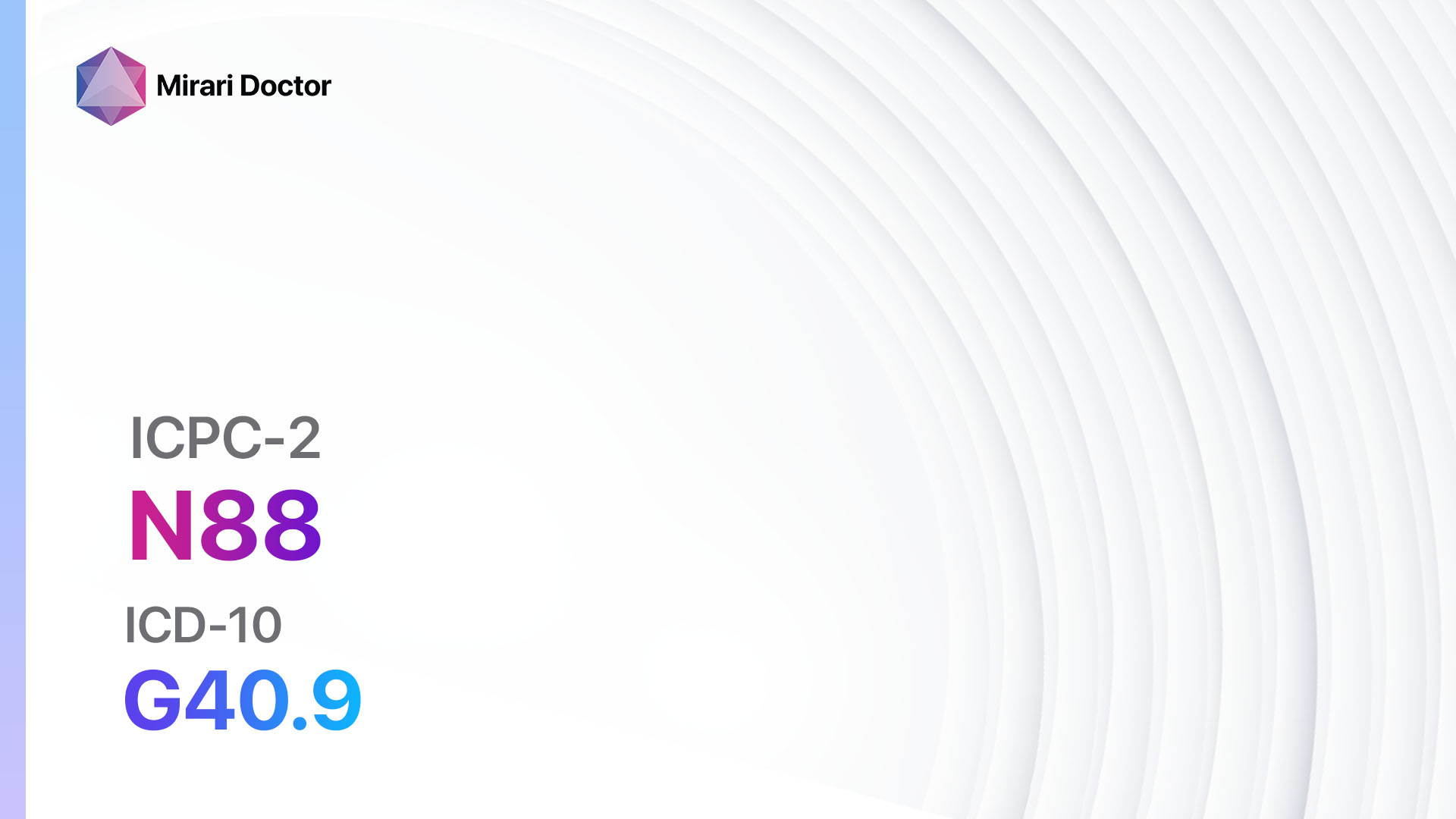
Introduction
Epilepsy is a neurological disorder characterized by recurrent seizures. It affects people of all ages and can have a significant impact on their quality of life[1]. The aim of this guide is to provide healthcare professionals with a comprehensive overview of the diagnosis and management of epilepsy.
Codes
- ICPC-2 Code: N88 Epilepsy
- ICD-10 Code: G40.9 Epilepsy, unspecified
Symptoms
- Seizures: Epilepsy is defined by the occurrence of recurrent seizures. Seizures can vary in type and severity, including generalized tonic-clonic seizures, absence seizures, focal seizures, and myoclonic seizures[2].
- Aura: Some individuals may experience an aura before a seizure, which can manifest as a strange sensation, smell, or visual disturbance[3].
- Loss of consciousness: Seizures can cause a temporary loss of consciousness, leading to falls or accidents[4].
- Muscle spasms: During a seizure, individuals may experience muscle spasms or jerking movements[5].
- Confusion or disorientation: After a seizure, individuals may feel confused or disoriented for a period of time[6].
Causes
- Genetic factors: Some cases of epilepsy have a genetic basis, with certain gene mutations increasing the risk of developing the condition[7].
- Brain injury: Traumatic brain injury, stroke, brain tumors, and infections such as meningitis or encephalitis can all increase the risk of epilepsy[8].
- Developmental disorders: Conditions such as autism spectrum disorder or neurofibromatosis can be associated with epilepsy[9].
- Prenatal factors: Exposure to certain substances or infections during pregnancy can increase the risk of epilepsy in the child[10].
Diagnostic Steps
Medical History
- Gather a detailed medical history, including information about the patient’s seizures, their frequency, duration, and any triggers.
- Identify any risk factors for epilepsy, such as a family history of the condition or a history of brain injury.
- Assess the impact of seizures on the patient’s daily life, including their ability to work, drive, or engage in activities.
Physical Examination
- Perform a thorough physical examination, including a neurological assessment to identify any signs or findings indicative of epilepsy.
- Look for any physical abnormalities or signs of neurological dysfunction that may be associated with epilepsy.
Laboratory Tests
- Complete blood count (CBC): To rule out any underlying infections or metabolic abnormalities that may be causing seizures.
- Electrolyte levels: To assess for any imbalances that could contribute to seizures.
- Liver function tests: Some medications used to treat epilepsy can affect liver function, so it is important to monitor liver enzymes.
- Kidney function tests: Certain antiepileptic drugs (AEDs) are excreted by the kidneys, so assessing renal function is important for drug selection and dosing.
- Lumbar puncture: In cases where meningitis or encephalitis is suspected as a cause of seizures, a lumbar puncture may be necessary to analyze cerebrospinal fluid.
Diagnostic Imaging
- Magnetic resonance imaging (MRI): This imaging modality is the gold standard for evaluating the structure of the brain and identifying any abnormalities that may be causing seizures.
- Computed tomography (CT) scan: CT scans can be useful in emergency situations to quickly assess for any acute brain injuries or bleeding.
- Electroencephalogram (EEG): This test measures the electrical activity of the brain and can help identify abnormal patterns associated with epilepsy.
Other Tests
- Video EEG monitoring: In cases where the diagnosis is uncertain or to capture a seizure for further analysis, video EEG monitoring may be necessary.
- Neuropsychological testing: This can help assess cognitive function and identify any areas of impairment that may be associated with epilepsy.
Follow-up and Patient Education
- Schedule regular follow-up appointments to monitor the patient’s response to treatment, adjust medication dosages if necessary, and address any concerns or questions.
- Provide education to the patient and their family about epilepsy, including seizure first aid, medication management, and lifestyle modifications to reduce seizure triggers.
Possible Interventions
Traditional Interventions
Medications:
Top 5 drugs for Epilepsy:
- Levetiracetam:
- Cost: $10-$50/month.
- Contraindications: Hypersensitivity to levetiracetam.
- Side effects: Drowsiness, dizziness, mood changes.
- Severe side effects: Suicidal thoughts, severe skin reactions.
- Drug interactions: None of clinical significance.
- Warning: May cause behavioral changes or psychiatric symptoms.
- Lamotrigine:
- Cost: $10-$50/month.
- Contraindications: Hypersensitivity to lamotrigine.
- Side effects: Headache, dizziness, rash.
- Severe side effects: Stevens-Johnson syndrome, liver failure.
- Drug interactions: Valproic acid, oral contraceptives.
- Warning: Rash may be a sign of a serious allergic reaction.
- Valproic acid:
- Cost: $10-$50/month.
- Contraindications: Liver disease, urea cycle disorders.
- Side effects: Nausea, vomiting, weight gain.
- Severe side effects: Liver failure, pancreatitis.
- Drug interactions: Lamotrigine, phenytoin.
- Warning: Increased risk of birth defects if used during pregnancy.
- Phenytoin:
- Cost: $10-$50/month.
- Contraindications: Hypersensitivity to phenytoin, heart block.
- Side effects: Gum overgrowth, dizziness, drowsiness.
- Severe side effects: Stevens-Johnson syndrome, liver damage.
- Drug interactions: Warfarin, oral contraceptives.
- Warning: Requires therapeutic drug monitoring due to narrow therapeutic range.
- Carbamazepine:
- Cost: $10-$50/month.
- Contraindications: Hypersensitivity to carbamazepine, bone marrow suppression.
- Side effects: Dizziness, drowsiness, nausea.
- Severe side effects: Stevens-Johnson syndrome, liver damage.
- Drug interactions: Valproic acid, phenytoin.
- Warning: May cause serious skin reactions, including toxic epidermal necrolysis.
Alternative Drugs:
- Topiramate: Can be used as an alternative to the above medications.
- Oxcarbazepine: Another option for patients who cannot tolerate or do not respond to the first-line medications.
- Gabapentin: May be used as an adjunctive therapy in certain cases.
- Pregabalin: Can be considered for patients with partial-onset seizures.
- Zonisamide: An option for patients with refractory epilepsy.
Surgical Procedures:
- Vagus nerve stimulation (VNS): Involves implanting a device that stimulates the vagus nerve to reduce the frequency and severity of seizures. Cost: $20,000-$40,000.
- Responsive neurostimulation (RNS): Involves implanting a device that detects abnormal brain activity and delivers targeted electrical stimulation to prevent seizures. Cost: $40,000-$60,000.
- Surgical resection: In cases where seizures are localized to a specific area of the brain, surgical removal of the affected area may be considered. Cost: $50,000-$100,000.
Alternative Interventions
- Ketogenic diet: A high-fat, low-carbohydrate diet that has been shown to reduce seizure frequency in some individuals with epilepsy. Cost: Varies depending on dietary needs and restrictions.
- Biofeedback: A technique that teaches individuals to control their physiological processes, such as heart rate and muscle tension, to reduce seizure triggers. Cost: $50-$100 per session.
- Acupuncture: May help reduce seizure frequency and improve overall well-being. Cost: $60-$120 per session.
- Herbal supplements: Some herbal supplements, such as CBD oil, may have potential benefits for managing seizures. Cost: Varies depending on the specific supplement.
- Yoga and meditation: Can help reduce stress and improve overall well-being, potentially reducing seizure triggers. Cost: Varies depending on the location and instructor.
Lifestyle Interventions
- Regular sleep patterns: Getting enough sleep and maintaining a consistent sleep schedule can help reduce seizure frequency.
- Stress management: Engaging in stress-reducing activities, such as exercise, meditation, or therapy, can help manage seizures triggered by stress.
- Avoiding seizure triggers: Identifying and avoiding specific triggers, such as flashing lights or certain foods, can help reduce seizure frequency.
- Regular exercise: Engaging in regular physical activity can help improve overall health and potentially reduce seizure frequency.
- Alcohol and drug avoidance: Avoiding alcohol and recreational drugs, which can lower the seizure threshold, is important for individuals with epilepsy.
It is important to note that the cost ranges provided are approximate and may vary depending on the location and availability of the interventions. It is recommended to consult with a healthcare professional for personalized treatment recommendations and cost estimates.
Mirari Cold Plasma Alternative Intervention
Understanding Mirari Cold Plasma
- Safe and Non-Invasive Treatment: Mirari Cold Plasma is a safe and non-invasive treatment option for various skin conditions. It does not require incisions, minimizing the risk of scarring, bleeding, or tissue damage.
- Efficient Extraction of Foreign Bodies: Mirari Cold Plasma facilitates the removal of foreign bodies from the skin by degrading and dissociating organic matter, allowing easier access and extraction.
- Pain Reduction and Comfort: Mirari Cold Plasma has a local analgesic effect, providing pain relief during the treatment, making it more comfortable for the patient.
- Reduced Risk of Infection: Mirari Cold Plasma has antimicrobial properties, effectively killing bacteria and reducing the risk of infection.
- Accelerated Healing and Minimal Scarring: Mirari Cold Plasma stimulates wound healing and tissue regeneration, reducing healing time and minimizing the formation of scars.
Mirari Cold Plasma Prescription
Video instructions for using Mirari Cold Plasma Device – N88 Epilepsy (ICD-10:G40.9)
| Mild | Moderate | Severe |
| Mode setting: 2 (Wound Healing) Location: 7 (Neuro system & ENT) Morning: 15 minutes, Evening: 15 minutes |
Mode setting: 2 (Wound Healing) Location: 7 (Neuro system & ENT) Morning: 30 minutes, Lunch: 30 minutes, Evening: 30 minutes |
Mode setting: 2 (Wound Healing) Location: 7 (Neuro system & ENT) Morning: 30 minutes, Lunch: 30 minutes, Evening: 30 minutes |
| Mode setting: 7 (Immunotherapy) Location: 1 (Sacrum) Morning: 15 minutes, Evening: 15 minutes |
Mode setting: 7 (Immunotherapy) Location: 1 (Sacrum) Morning: 30 minutes, Lunch: 30 minutes, Evening: 30 minutes |
Mode setting: 7 (Immunotherapy) Location: 1 (Sacrum) Morning: 30 minutes, Lunch: 30 minutes, Evening: 30 minutes |
| Mode setting: 7 (Immunotherapy) Location: 7 (Neuro system & ENT) Morning: 15 minutes, Evening: 15 minutes |
Mode setting: 7 (Immunotherapy) Location: 7 (Neuro system & ENT) Morning: 30 minutes, Lunch: 30 minutes, Evening: 30 minutes |
Mode setting: 7 (Immunotherapy) Location: 7 (Neuro system & ENT) Morning: 30 minutes, Lunch: 30 minutes, Evening: 30 minutes |
| Total Morning: 45 minutes approx. $7.50 USD, Evening: 45 minutes approx. $7.50 USD |
Total Morning: 90 minutes approx. $15 USD, Lunch: 90 minutes approx. $15 USD, Evening: 90 minutes approx. $15 USD |
Total Morning: 90 minutes approx. $15 USD, Lunch: 90 minutes approx. $15 USD, Evening: 90 minutes approx. $15 USD |
| Usual treatment for 7-60 days approx. $105 USD – $900 USD | Usual treatment for 6-8 weeks approx. $1,890 USD – $2,520 USD |
Usual treatment for 3-6 months approx. $4,050 USD – $8,100 USD
|
 |
|
Use the Mirari Cold Plasma device to treat Epilepsy effectively.
WARNING: MIRARI COLD PLASMA IS DESIGNED FOR THE HUMAN BODY WITHOUT ANY ARTIFICIAL OR THIRD PARTY PRODUCTS. USE OF OTHER PRODUCTS IN COMBINATION WITH MIRARI COLD PLASMA MAY CAUSE UNPREDICTABLE EFFECTS, HARM OR INJURY. PLEASE CONSULT A MEDICAL PROFESSIONAL BEFORE COMBINING ANY OTHER PRODUCTS WITH USE OF MIRARI.
Step 1: Cleanse the Skin
- Start by cleaning the affected area of the skin with a gentle cleanser or mild soap and water. Gently pat the area dry with a clean towel.
Step 2: Prepare the Mirari Cold Plasma device
- Ensure that the Mirari Cold Plasma device is fully charged or has fresh batteries as per the manufacturer’s instructions. Make sure the device is clean and in good working condition.
- Switch on the Mirari device using the power button or by following the specific instructions provided with the device.
- Some Mirari devices may have adjustable settings for intensity or treatment duration. Follow the manufacturer’s instructions to select the appropriate settings based on your needs and the recommended guidelines.
Step 3: Apply the Device
- Place the Mirari device in direct contact with the affected area of the skin. Gently glide or hold the device over the skin surface, ensuring even coverage of the area experiencing.
- Slowly move the Mirari device in a circular motion or follow a specific pattern as indicated in the user manual. This helps ensure thorough treatment coverage.
Step 4: Monitor and Assess:
- Keep track of your progress and evaluate the effectiveness of the Mirari device in managing your Epilepsy. If you have any concerns or notice any adverse reactions, consult with your health care professional.
Note
This guide is for informational purposes only and should not replace the advice of a medical professional. Always consult with your healthcare provider or a qualified medical professional for personal advice, diagnosis, or treatment. Do not solely rely on the information presented here for decisions about your health. Use of this information is at your own risk. The authors of this guide, nor any associated entities or platforms, are not responsible for any potential adverse effects or outcomes based on the content.
Mirari Cold Plasma System Disclaimer
- Purpose: The Mirari Cold Plasma System is a Class 2 medical device designed for use by trained healthcare professionals. It is registered for use in Thailand and Vietnam. It is not intended for use outside of these locations.
- Informational Use: The content and information provided with the device are for educational and informational purposes only. They are not a substitute for professional medical advice or care.
- Variable Outcomes: While the device is approved for specific uses, individual outcomes can differ. We do not assert or guarantee specific medical outcomes.
- Consultation: Prior to utilizing the device or making decisions based on its content, it is essential to consult with a Certified Mirari Tele-Therapist and your medical healthcare provider regarding specific protocols.
- Liability: By using this device, users are acknowledging and accepting all potential risks. Neither the manufacturer nor the distributor will be held accountable for any adverse reactions, injuries, or damages stemming from its use.
- Geographical Availability: This device has received approval for designated purposes by the Thai and Vietnam FDA. As of now, outside of Thailand and Vietnam, the Mirari Cold Plasma System is not available for purchase or use.
References
- Epilepsy Foundation. (2021). What is Epilepsy? Retrieved from https://www.epilepsy.com/learn/about-epilepsy-basics/what-epilepsy
- Scheffer, I. E., Berkovic, S., Capovilla, G., Connolly, M. B., French, J., Guilhoto, L., … & Zuberi, S. M. (2017). ILAE classification of the epilepsies: position paper of the ILAE Commission for Classification and Terminology. Epilepsia, 58(4), 512-521.
- Dugan, P., Carlson, C., Bluvstein, J., Chong, D. J., Friedman, D., & Kirsch, H. E. (2014). Auras in generalized epilepsy. Neurology, 83(16), 1444-1449.
- Nguyen, R., & Téllez-Zenteno, J. F. (2009). Injuries in epilepsy: a review of its prevalence, risk factors, type of injuries and prevention. Neurology international, 1(1).
- Devinsky, O. (2004). Effects of seizures on autonomic and cardiovascular function. Epilepsy currents, 4(2), 43-46.
- Fisher, R. S., & Schachter, S. C. (2000). The postictal state: a neglected entity in the management of epilepsy. Epilepsy & Behavior, 1(1), 52-59.
- Thomas, R. H., & Berkovic, S. F. (2014). The hidden genetics of epilepsy—a clinically important new paradigm. Nature Reviews Neurology, 10(5), 283-292.
- Pitkänen, A., & Lukasiuk, K. (2011). Mechanisms of epileptogenesis and potential treatment targets. The Lancet Neurology, 10(2), 173-186.
- Tuchman, R., & Rapin, I. (2002). Epilepsy in autism. The Lancet Neurology, 1(6), 352-358.
- Pennell, P. B. (2002). Pregnancy in the woman with epilepsy: maternal and fetal outcomes. Seminars in neurology, 22(3), 299-308.
Related articles
Made in USA


